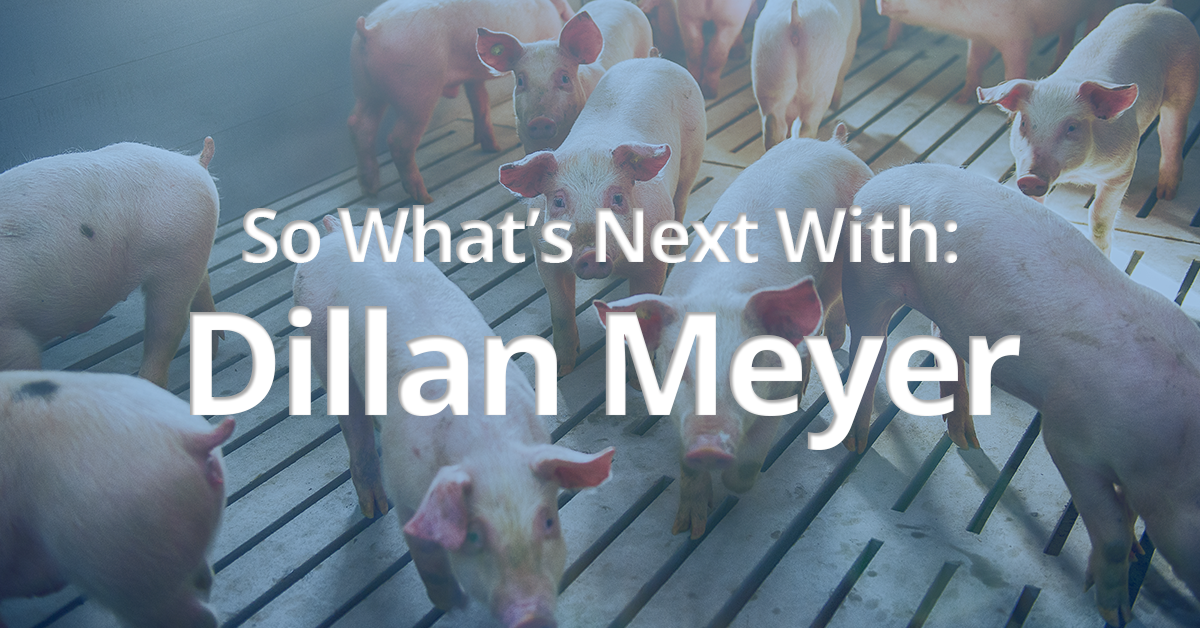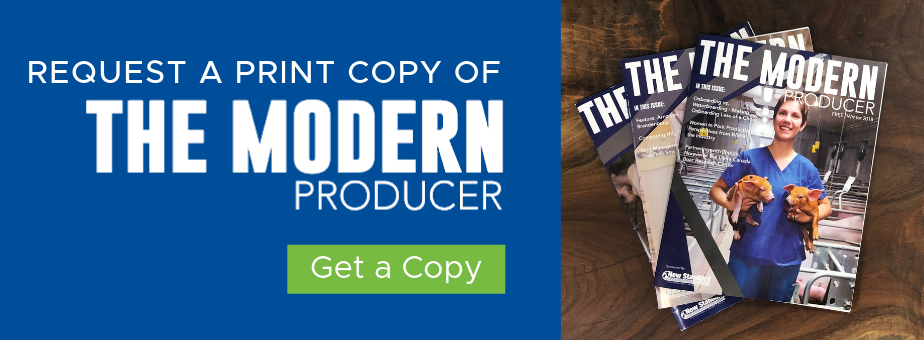
The New Standard team is all about the advancement of taking care of our animals in this industry. So are quite a few of our producers we come across in this field. Over the course of our time as a company, we were always curious about what the future of farming could be. We sat down with a handful of producers to ask just that. What they enjoy currently, and what, realistically or not, would they like to see in the next 10 years for the advancement of farming.
You have read all about Hunter Thomas, Chet Mogler, Tim Friedel, and Darren Sloan viewpoints. Today we have Dillan Meyer.
Dillan Meyer
McFleeg Feeds, Watertown SD. Account manager
Q: How long have you been in the industry?
A: I’m coming up on a decade working in the swine industry and 7 years in poultry (mostly turkey)
Q: How has technology changed the way barns operate today?
A: When I think of “technology” in this regard, I think of mobility/remoteness, automation, and security. The ways technology has impacted livestock production is innumerable.
In terms of mobility/remoteness, I am referring to the ability of a livestock producer today to be able to “manage” or “oversee” a facility while performing other tasks, without physically being there. Now of course technology doesn’t replace a manager being on a farm, the grower still has the responsibility of being there, but these tools can be used to make minor adjustments, that will work until you have time to be back on farm again. This advancement within our production facilities has led to a much greater efficiency level across the entire industry.
When I talk about automation, most producers would argue that our controllers have been automated for years and years, and they would be correct.
But today we are on a whole new level. When I watch a turkey finishing facility make decisions on whether or not to ventilate, or at which level (stage) it should ventilate, based on the humidity level within the barn, while taking into account that it cannot over, or undershoot its temperature set points by more than a few degrees, I am totally blown away at how far we’ve come.
Oh and did I forget to mention while making that decision, it also is taking into account the outside factors as well! So as to not bring in air that is overly humid based on the weather outside, in this scenario. We have curtain-sided barns today adjusting up or down not simply on temperature, but raising the side where the wind may be coming from, to slow down a draft over the heads of turkeys. A draft that can start with irritation, and end with a group of sick birds. To top it all off, by setting your controller up properly, most of all of these options/adjustments can and will be made without a human being present. This type of automation has led to much better environments, which allows the producer to have greater production, and ultimately more freedom to follow up on other areas of importance.
Lastly, I think of security. And I don’t necessarily mean it in the traditional sense of security, however, technology greatly improves that kind of security as well. I think of it in terms of having a greater sense of security as the owner/producer, when you are able to pull up a live feed video from within your facility and see that behavior is normal, feed lines are full, and that water lines are being used. We’ve had alarm systems for many years that would call out to your home or cell phone if there was an over/under temp reading, but today’s technology blows that out of the water.
Q: Where do you see things in the next 10 years?
A: Well in the last 10 we have seen quite the changes in barn design, specifically in turkeys. Not long ago you could basically find one kind of Turkey finisher, a curtain-sided barn. Now today more and more growers are seeing advantages in what we refer to as a “tunnel barn.” This practice has been common with the swine industry but is fairly new to poultry.
I believe we will continue to see changing ideas on which facility is best, based on production numbers, and of course personal preference. We are already seeing whole facilities being constructed of concrete or pre-cast walls. And this has been quite the change. Big beautiful, indestructible buildings that provide a very secure and controlled environment. I believe we will continue to see changes in the building materials used. I could also see facilities and/or sites continue to get larger. With the technological advancements I mentioned earlier, it’s easier and easier to maintain an environment, leading to the grower being able to look after more and more animals.
Q: What thing would you want, realistically or not, in the future for producers?
A: The thing I always pray for in today’s agriculture is for the growers to have newfound solidarity or unity with one another. There are many outside factors that would like nothing more than to see farming as we know it to come to an end. I believe the only way to combat this type of thing is by banding together. And constantly going above and beyond to educate people from outside the industry, to the level of care and compassion we all have on a daily basis in our livestock production facilities.





